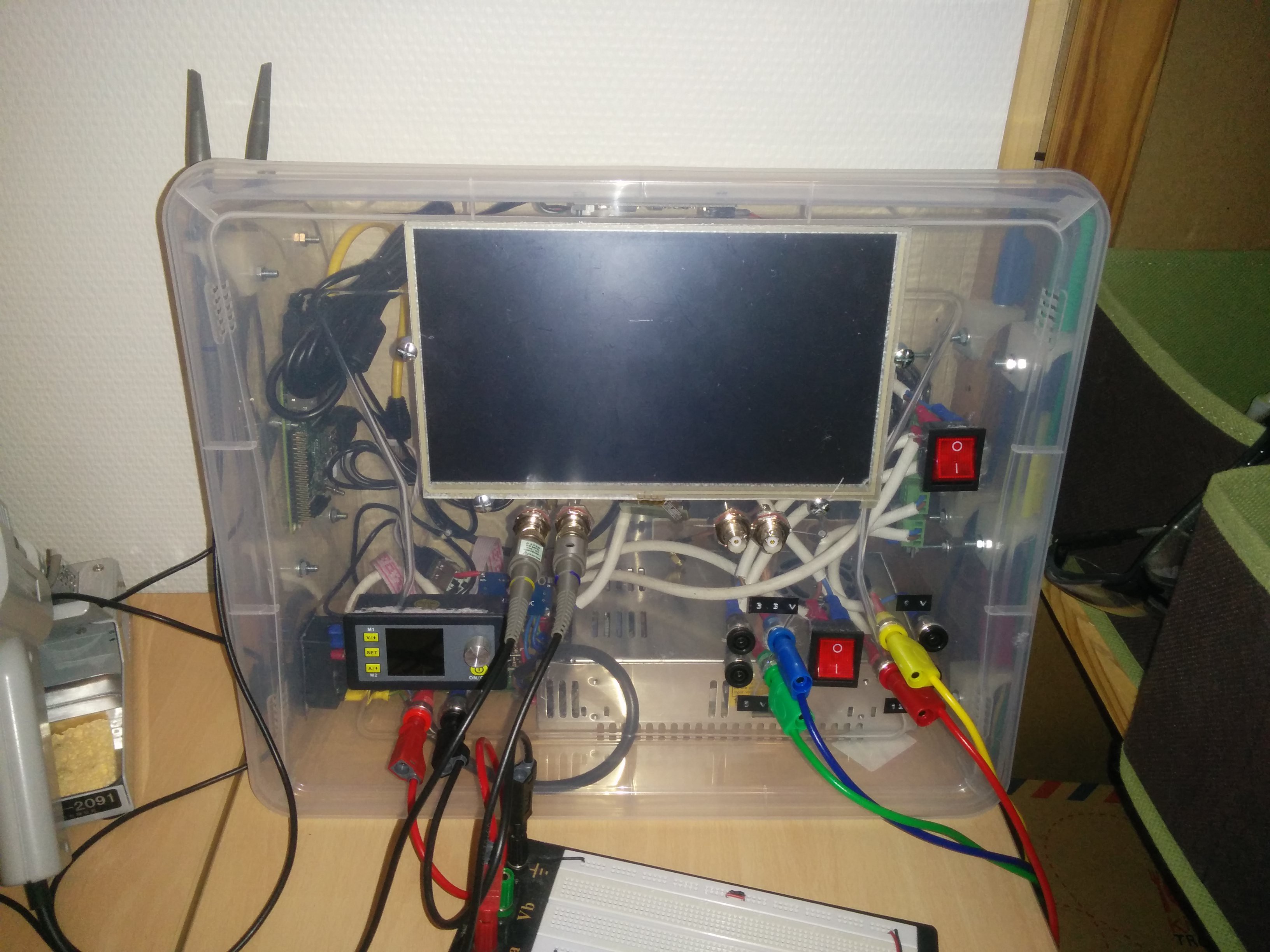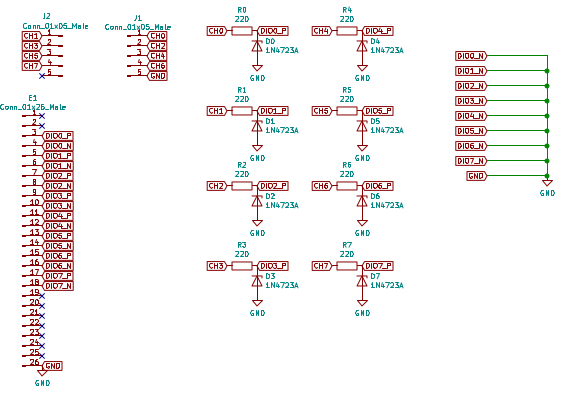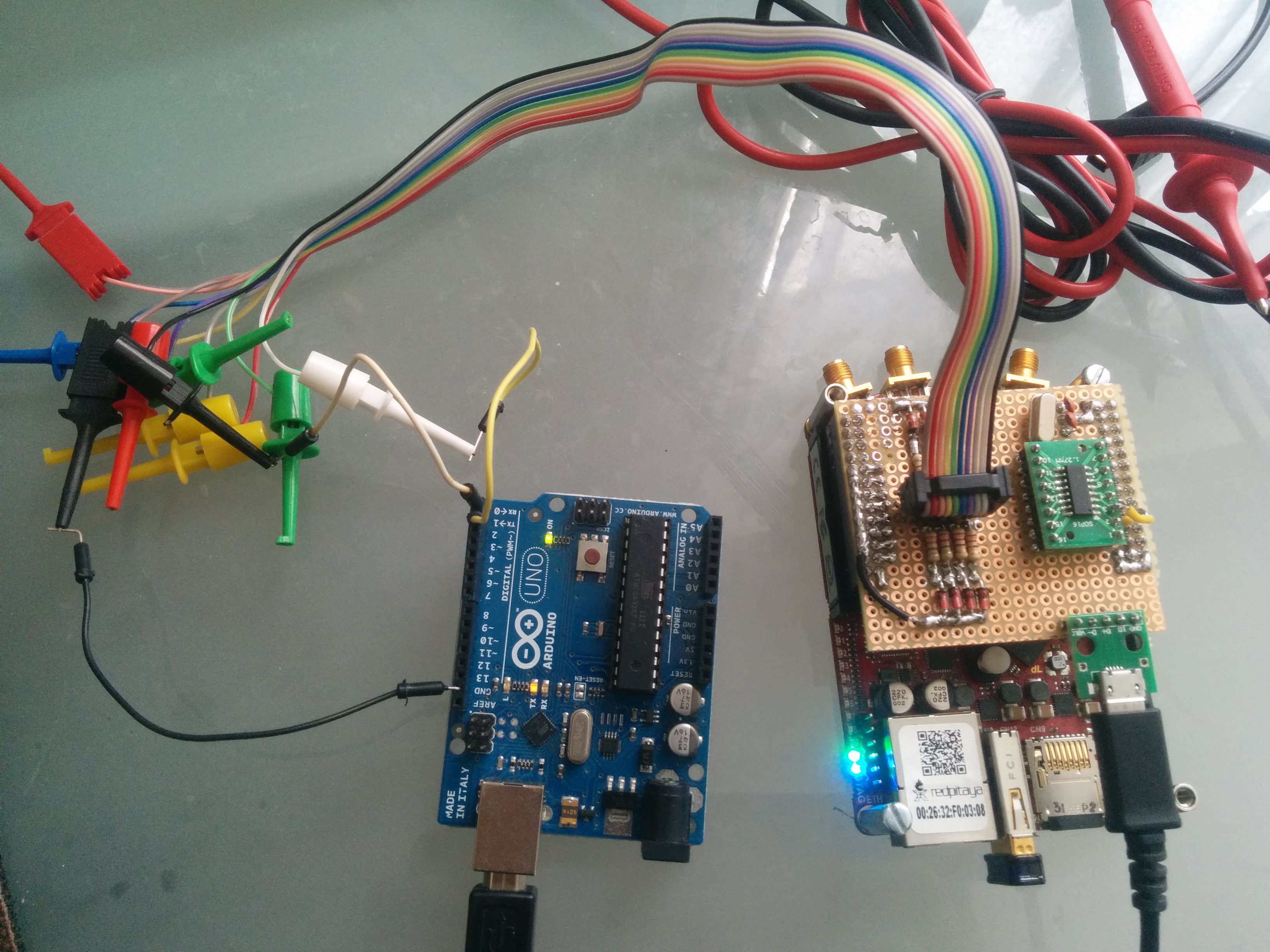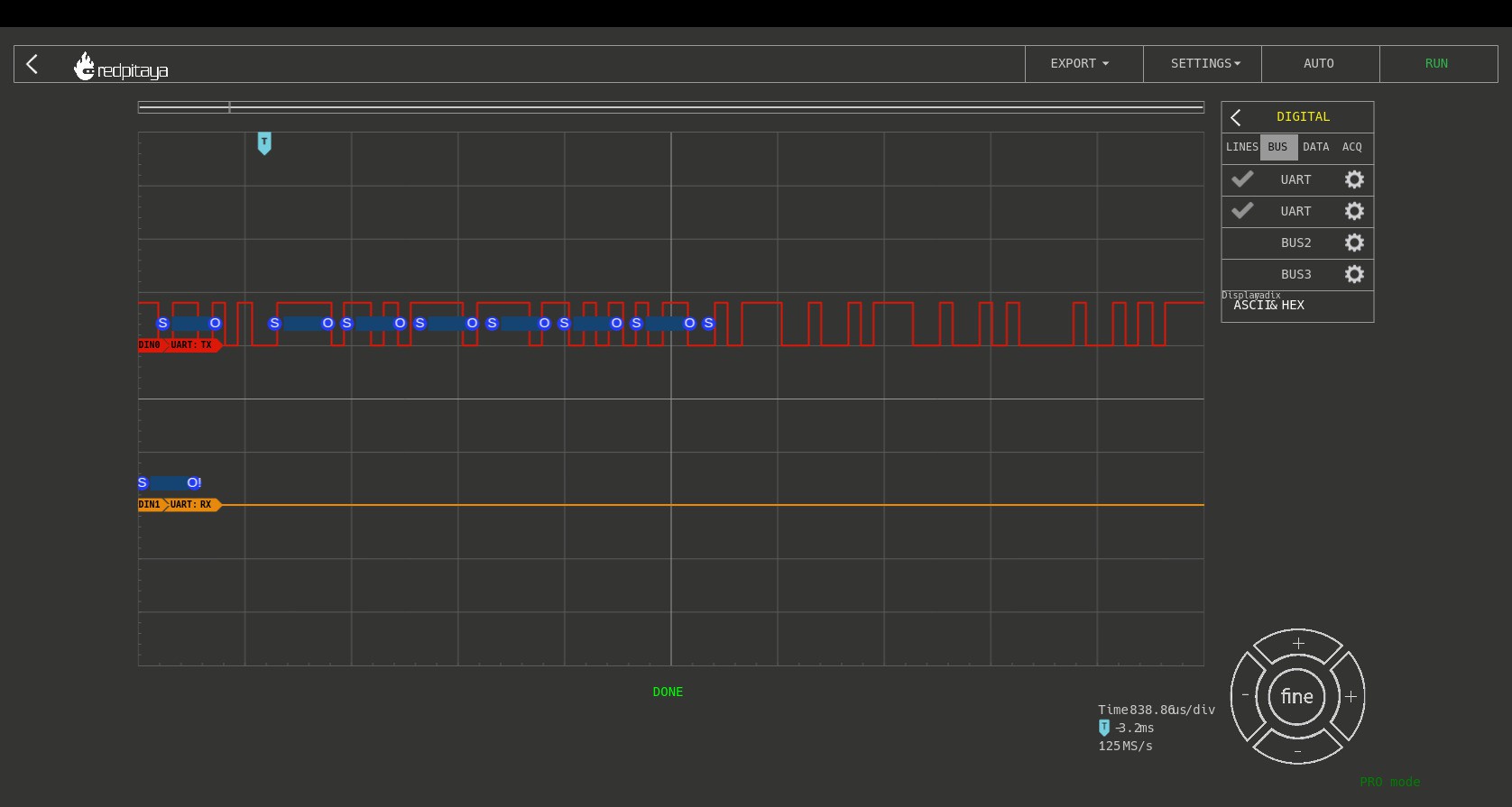Long time without news, but I continue to work on this project.
First, I abandoned the idea of a 3D printed case, and I bought a plastic case and do some holes into.

Second move, I discovered WaveForms, an open-source software for digilent tools but works with a documented Digilent Instrumentation Protocol. I started to write an implementation for redpitaya and it’s probably easier to write than a complete software.
And the last, I started working on logic analyzer feature for the readpitaya. It’s a documented feature, but It seems require (for my STEMlab 125-14) an expensive extension board (I already have the application). After reading how a logic analyzer works, I just create a simple shield with zener diodes to protect inputs:

The prototype board:

And the result:

I am rather satisfied with the result (I didn’t destroy my redpitaya!) except the decoding doesn’t work.
You probably see the ship on my proto-shield. It’s a UART/USB converter, the next step is to implement the SUMP protocol to allow to use PulseView if you don’t have the chance to have the official application. WaveForms supports logic analyzer, but with out decoder.
 Sanpi
Sanpi
Discussions
Become a Hackaday.io Member
Create an account to leave a comment. Already have an account? Log In.